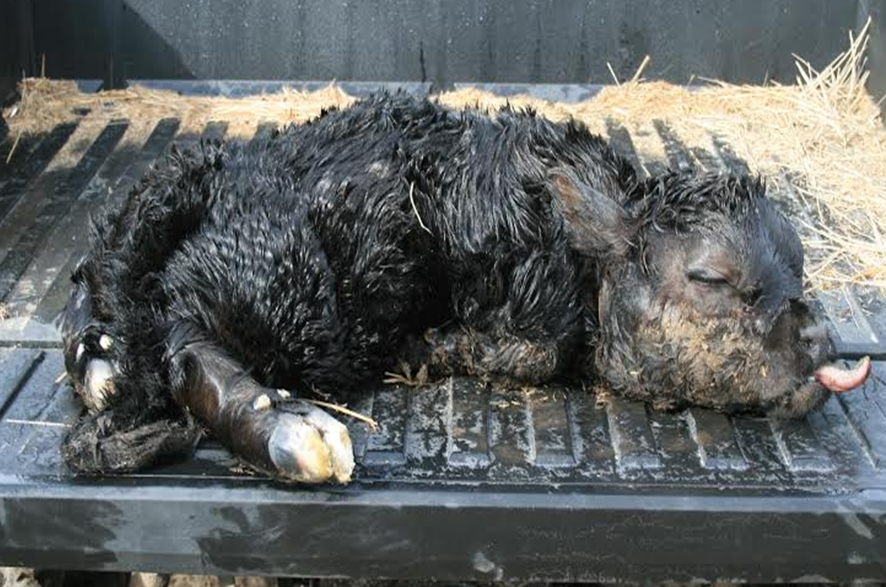
UNL researchers, Dr. David Steffen (Veterinary Diagnostic Center) and Dr. Jessica Petersen (Department of Animal Science) are using veterinary and genomic tools to understand the cause of abnormal, unwanted traits in beef cattle. This research, including a careful description of affected calves and collection of genetic samples, is important in the case that these conditions are heritable.
A novel form of severe, lethal dwarfism exemplifies a current study. Beginning in 2016, several calves (Black Angus and Angus cross) born with this phenotype were submitted to the VDC. Genotyping of the calves showed they did not have any genetic mutations that have previously been documented to cause dwarfism. However, the pedigrees of the affected calves suggest this is an inherited, recessive condition. The research team is currently working to identify any new genetic variant(s) causing this condition which could allow for the identification of carriers of this undesirable trait.
THE SUCCESS OF THIS RESEARCH IS DEPENDENT UPON HELP FROM PRODUCERS! The research team is asking producers to report any calf born with an unusual, unwanted phenotype such as dwarfism. All information and samples submitted will contribute to building an understanding of these conditions and the potential identification of means to prevent or manage their occurrence.
In the case a defective calf is identified:
1) If possible - contact Dr. Steffen (402-472-1434; dsteffen1@unl.edu) prior to disposal of the calf. Funding is available to assist with diagnosis. In the case of a dwarf calf, examination of the femur, front metacarpal, and head will help verify the phenotype. For other conditions, contact Dr. Steffen or your breed organization to facilitate proper diagnostic sampling.
2) Collect a sample from the calf for DNA analysis (ear or muscle tissue, frozen).
3) If available, collect a blood sample (EDTA tube) from the sire and dam.
4) Photograph the calf.
5) Include pedigree information. Note: the animal’s pedigree and the owners’ information will be kept confidential and used only for the purpose of research.
Success in identifying novel genetic variants before they become widespread is possible only through the continued contributions of producers. Most often, the investigations result in determining a non-genetic cause, such as environment or nutrition. However, new information from those cases can still assist producers in herd management at no disruption to breeding programs. Working together we can improve and understand the health and genetics of our beef herds.
Edited 2/8/2018 - The researchers note that cases of genetically abnormal calves are rare and occur across breeds; further, in many instances the cause of abnormalities is not attributed to genetics. The dwarfism trait noted in the article has been recently reported on three ranches, with a total of 6 calves affected. Calves with similar deformities have previously been reported in several breeds. While it is important to understand the cause of this defect, the dwarfism disorder currently being investigated is not thought to be common nor pose a concern to the industry. Historically, we lacked the tools to fully investigate the cause of these events. Now with new tools and technologies we are fortunate that American Angus Breeders and their leadership are proactive in supporting investigations of emerging issues to prevent problems from disrupting breeding programs.
To listen to BeefWatch podcasts go to: https://itunes.apple.com/us/podcast/unl-beefwatch/id964198047 or paste http://feeds.feedburner.com/unlbeefwatch into your podcast app.